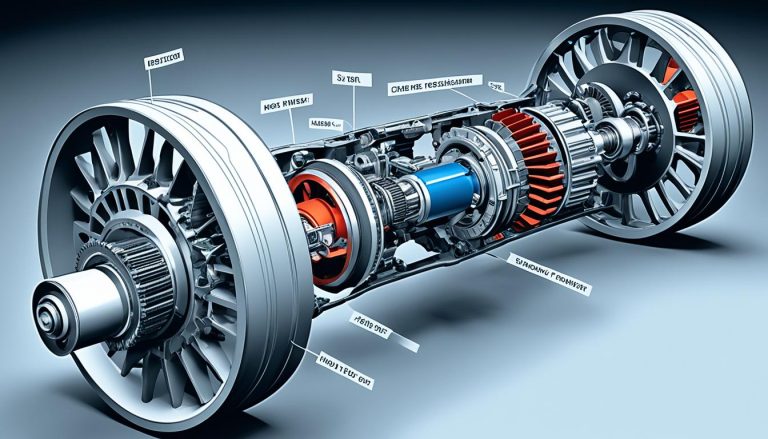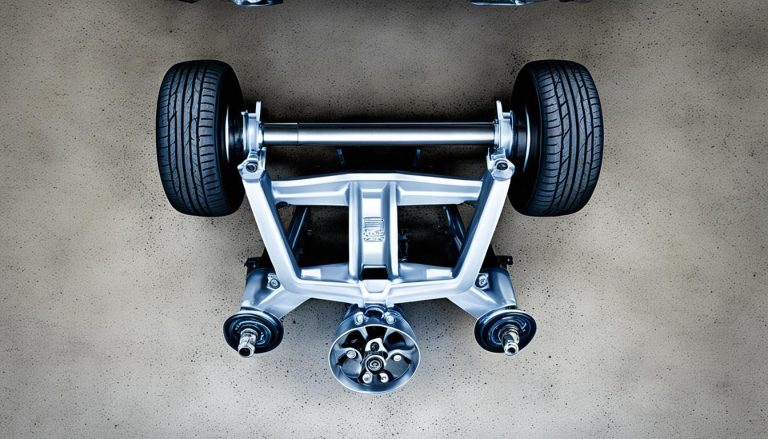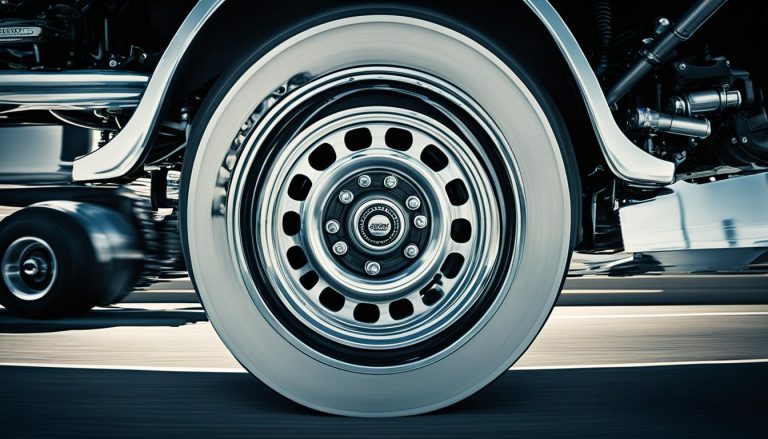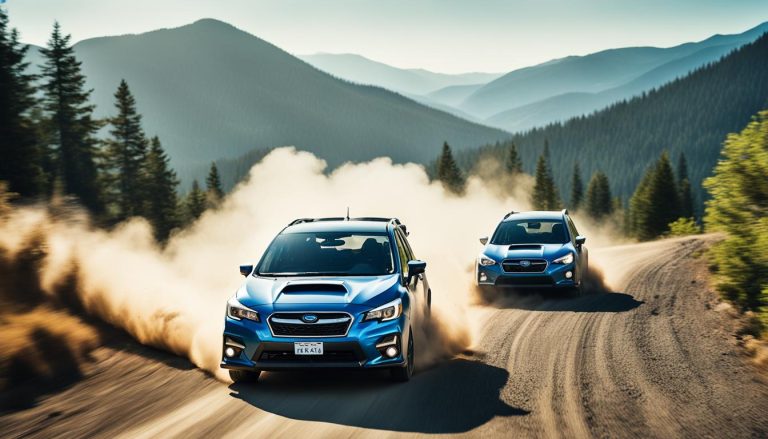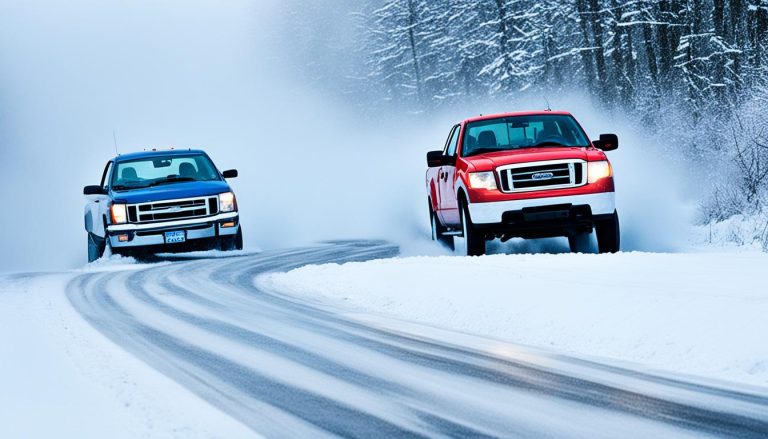Limited Slip vs Locking Rear Differential Duel
When it comes to carving corners on a backcountry road or conquering challenging off-road trails, your vehicle’s performance hinges upon the mechanics beneath—specifically, the type of differential it employs. For enthusiasts and everyday drivers alike, making an informed choice in the limited slip differential vs locking rear differential debate is crucial for tailored traction and handling. In this differential comparison, you’ll gain insights into the nuances of each system and discover which setup aligns with your driving demands.
Key Takeaways
- Understand the fundamental differences between limited slip and locking rear differentials.
- Discover how each differential type affects vehicle handling and traction.
- Learn about real-world driving scenarios where each differential excels.
- Identify which differential option aligns with your personal driving needs and habits.
- Evaluate the maintenance requirements associated with different differential systems.
The Mechanics of a Differential and Vehicle Traction
When it comes to your vehicle’s performance, understanding how different components work together is essential for a smooth driving experience. One such component that plays a pivotal role is the differential. Let’s delve into the intricacies of the open differential and how it influences tire spin and overall vehicle traction and handling.
Understanding Open Differentials and Tire Spin
The open differential is a vital part of a vehicle’s drive system, ensuring that your wheels can rotate at different speeds, particularly during turns. This not only aids in vehicle maneuverability but also helps prevent tire damage on the road. However, the simplicity of an open differential can sometimes be its downfall. Since power is transferred to the wheel with the least resistance, instances of tire spin can occur when one tire loses its grip, which may compromise your vehicle’s traction.
Ever been stuck on a patch of ice and found that only one wheel seems to be spinning hopelessly? That’s often the open differential distributing power to the wheel that’s already lost traction, leaving you stranded.
The Role of a Differential in Vehicle Handling
Vehicle handling is heavily influenced by the efficiency of the differential. While open differentials are common and effective under normal conditions, the introduction of limited slip and locking differentials by brands like Eaton has elevated the standards. These advanced differentials, including the renowned Detroit Locker, Eaton ELocker, Detroit Truetrac, and Eaton Posi, are engineered to optimize power distribution between wheels, effectively enhancing both vehicle traction and handling. In a variety of driving conditions, you’ll notice that these systems help to maintain control, particularly when driving over surfaces that challenge traction.
| Differential Type | Benefit | Recommended Use |
|---|---|---|
| Open Differential | Equal torque to both wheels, essential for smooth turns. | Everyday street driving on well-maintained roads. |
| Detroit Locker | Maximizes traction by locking both wheels under power. | Drag racing and off-road conditions. |
| Eaton ELocker | On-demand lockup capability via electronic control. | Rock crawling and situational off-road driving. |
| Detroit Truetrac | Torque transfer via helical gears without wearable parts. | Street driving with occasional spirited performance. |
| Eaton Posi | Prevents tire spin with clutch-style, tunable performance. | Versatile use from street to strip on performance vehicles. |
In conclusion, while the open differential is a reliable standard for everyday driving, exploring the various differential options available can greatly improve your drive quality and safety, especially in conditions where vehicle control is paramount. Carefully consider your driving needs and choose the differential that best suits your lifestyle and your adventures on the road.
Why Choose a Limited Slip Differential?
If you’re in the market for a performance upgrade or simply aiming to improve your vehicle’s handling, you might be considering different types of differentials. Among your options is the limited slip differential (LSD) – a technology designed to enhance traction and deliver power more effectively to your car’s wheels. This gem of a differential mechanism is particularly useful in scenarios where maintaining grip and stability are crucial.
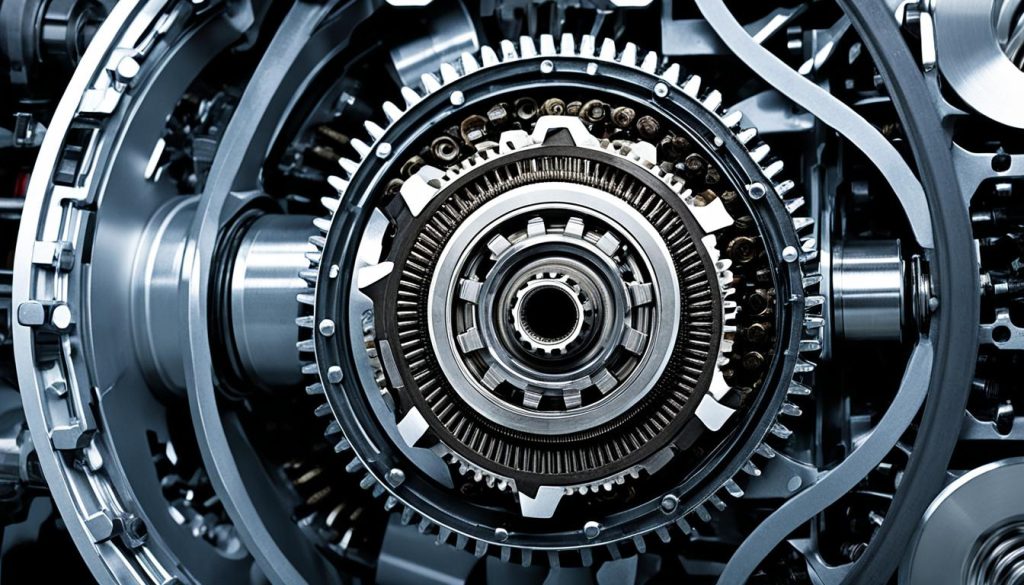
Improving Traction with the Limited Slip Mechanism
A limited slip differential cleverly manages the power sent to your wheels, ensuring that even if one begins to lose grip, it doesn’t spin away all its power. By permitting a limited amount of slip through an intricate gear arrangement, LSDs can significantly benefit day-to-day drivers. Unlike a locking differential, which might be overkill for regular streets, the LSD is more subtle in its approach, providing a balance between functionality and comfort.
Vehicle Scenarios Favoring Limited Slip Differentials
Consider a quick getaway at a traffic light or a spirited drive on a twisty mountain road. Such driving conditions demand that your wheels maintain the best possible grip to avoid spinning. The LSD comes into play by directing more power to the wheel with better traction, facilitating smoother launches and more confident handling through bends.
Imagine taking on a sharp curve in your sports car – with a limited slip differential under the hood, you’re assured a dynamic drive as the LSD instinctively transfers power to the steadier wheel, providing you with controlled acceleration out of the turn.
Eaton’s clutch-style posi-traction LSD exemplifies this technology. Initially designed for GM vehicles, such as the celebrated Chevrolet Corvette, it has become a go-to option for enthusiasts aiming for superior performance without compromising on drivability.
| Scenario | Benefit of Using LSD |
|---|---|
| Daily Commuting | Enhanced traction in varying weather conditions |
| Road Racing | Better handling due to power transfer to gripping wheel |
| Performance Driving | Prevention of one-wheel spins for optimal acceleration |
| Cornering | Stable and smooth handling reduces tire wear |
Arming your vehicle with a limited slip differential equips you to take on a diverse array of driving challenges with confidence, ensuring you keep a firm grip on the asphalt in moments when every bit of traction counts.
Limited Slip Differential vs Locking Rear Differential
As you delve into the world of vehicle dynamics, the debate of limited slip differential versus locking rear differential proves to be more than just technical jargon; it is a crucial consideration for driving enthusiasts and professionals alike. These components are pivotal in determining how power is distributed to your wheels, thus directly influencing your car’s traction and performance, especially during off-roading adventures.
Limited slip differentials are known for their ability to provide improved traction over standard open differentials by allocating power to the wheel with the most grip when its counterpart begins to slip. On the other hand, a locking rear differential is a force to be reckoned with when tackling uneven terrains, as it maintains both wheels rotating at the same speed for unmatched traction.
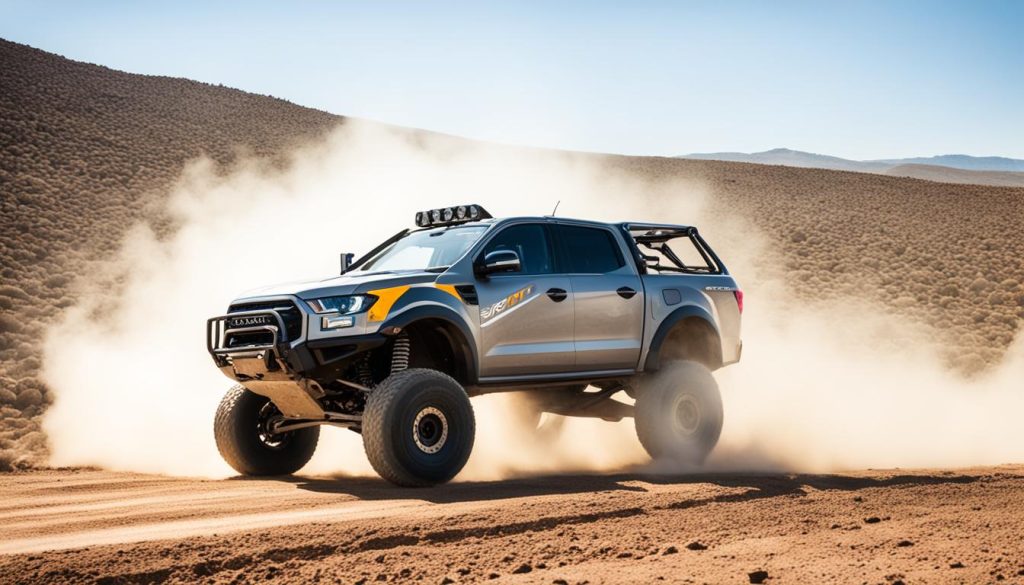
Here’s a comparison that can help you understand how each one operates and which one may be best suited for your driving needs:
| Feature | Limited Slip Differential | Locking Rear Differential |
|---|---|---|
| Operation | Uses gears or clutches to allocate power | Locks wheels together to rotate at the same speed |
| Best For | Road driving, everyday use | Off-roading, challenging terrains |
| Advantages | Smooth handling, better for tire wear | Maximum grip, essential for rugged terrain |
| Considerations | May not provide as aggressive traction as a locker | Can be overkill for regular driving conditions |
Ultimately, both types have their merits, and your choice should reflect the kind of driving you frequently engage in. Whether it’s the adaptive power distribution of the limited slip differential you seek or the unyielding grip of a locking rear differential for your off-road escapades, understanding these systems allows for a more informed decision to enhance your driving experience.
Locking Rear Differentials: Maximizing Off-Road Performance
For the adventurers and thrill-seekers who regularly trade asphalt for rugged trails, the locking rear differential remains an indispensable component. It’s the unsung hero that provides the tenacity and grip when conquering challenging terrains. Whether you’re rock crawling in Moab or powering through a muddy backwoods path, understanding the mechanics of your vehicle’s differential is crucial to optimize your off-roading experience.
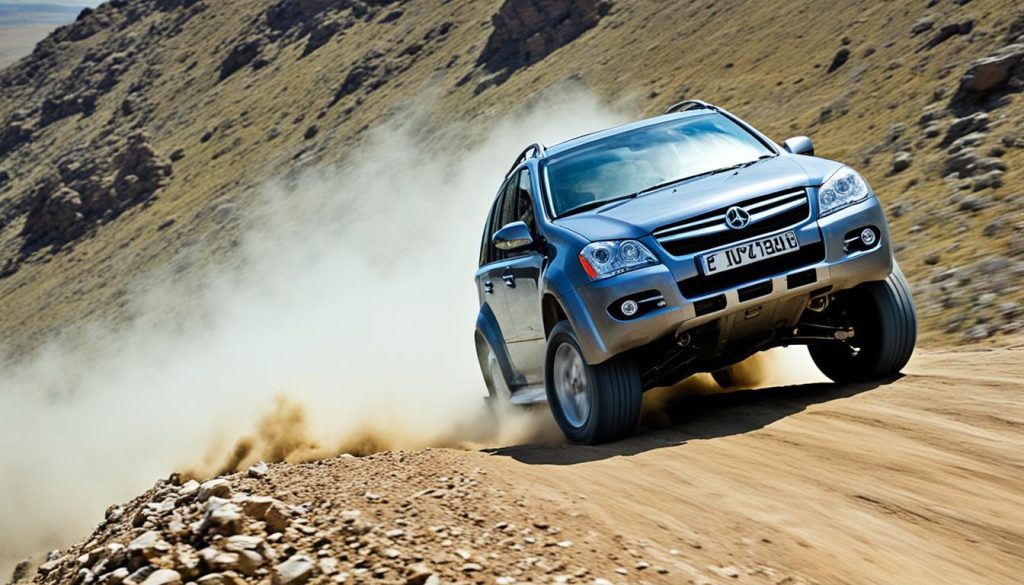
How Locking Differentials Aid in Off-Roading Adventures
The concept of a locking rear differential is straightforward yet profound: By locking both left and right wheels, it ensures that both get equal power, reducing the chances of getting stuck due to one wheel spinning freely. This can be especially crucial when traversing over obstacles, ascending steep inclines, or navigating through patches where traction is compromised.
Automatic vs Manual Locking Differentials – What You Need to Know
Determining whether an automatic or manual locking differential is right for your off-roading escapades boils down to understanding their distinct characteristics and modes of operation. Here, we delve into the specifics of both types to clarify their functionalities and respective advantages.
| Feature | Automatic Locking Differential | Manual Locking Differential |
|---|---|---|
| Engagement | Engages automatically when slip is detected | Engaged by the driver, typically via a switch |
| Power Distribution | Equal power to both wheels once locked | Equal power to both wheels when engaged |
| Control | Less direct control over engagement | Complete control over when and how it’s engaged |
| Suitability | Optimal for spontaneous off-road conditions | Best for predictable off-road challenges where driver can plan for engagement |
| Cornering | Can be challenging on icy/slippery roads | Can be disengaged to allow differential wheel speeds for smoother cornering |
| Popular Brands | Eaton’s Detroit Locker | Eaton’s ELocker |
Exploring the intricacies of automatic locking differentials, you’ll encounter brands like Eaton’s Detroit Locker, which automatically locks the rear wheels together when torque is applied. This makes it a rugged ally for unexpected terrain shifts. However, when it comes to navigating through less predictable paths, a manual locking differential, such as Eaton’s ELocker, provides you the discretion to engage the lock when you deem it most necessary, safeguarding your drivetrain from undue stress during regular driving conditions.
Both locking mechanisms have their place in the realm of off-roading, with your choice influenced by the type of off-road driving you do, familiarity with your vehicle’s response patterns, and the conditions you most frequently encounter. Whether you opt for an automatic locking differential or a manual locking differential, you’re equipping your vehicle with a critical tool for your off-road arsenal, ensuring that your adventures are as limitless as the landscapes you explore.
Comparing Differential Types: Eaton’s Diverse Offerings
When it comes to enhancing your vehicle’s performance, choosing the right differential is key. Eaton has developed a range of differentials catered to various driving needs, from rugged off-roading to high-speed racing. Understanding the distinctions between these differential types Detroit Locker, Eaton ELocker, Detroit Truetrac, and Eaton Posi—can guide you in tailoring your ride to perfection.
The Rugged Detroit Locker for Maximum Grip
If you’re pursuing an adrenaline rush on the strip or seeking unwavering power for tough terrains, the Detroit Locker is engineered for extreme conditions. Its 100% lock-up capability ensures that both tires receive equal torque, delivering the utmost grip when it’s needed the most.
Eaton’s ELocker and Its Electronic Edge
For those who navigate the unpredictable paths of off-road adventures, the Eaton ELocker offers convenience with a technological twist. At the simple press of a button, this electronically-controlled differential transforms from an open to a locked state, adapting to challenging obstacles with ease.
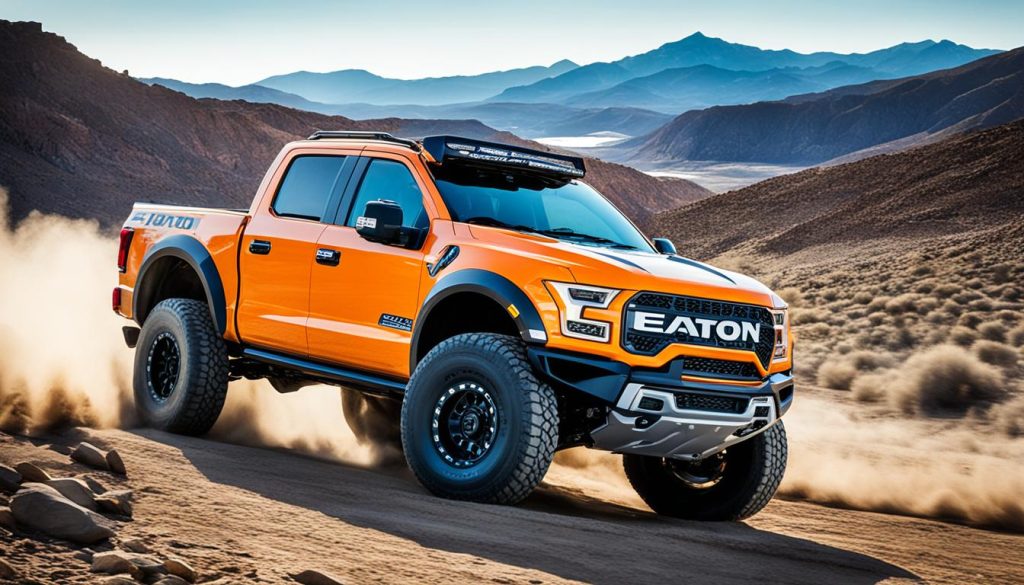
The Versatile Detroit Truetrac for Everyday Driving
The Detroit Truetrac shines in its seamless operation and maintenance-free design. Ideal for daily use with the occasional spirited drive, this helical-gear driven differential self-adjusts to varying conditions, enhancing your vehicle’s handling without the need for conscious engagement.
The Performance-Oriented Eaton Posi
Enthusiasts looking for an edge in performance driving circumstances will find solace in the Eaton Posi. Its rebuildable clutch system permits custom tuning, adjusting to the demands of both regular streets and competitive tracks to keep wheel slip in check.
Diving into the world of differentials reveals a spectrum of mechanics and utilities. Understanding the nuanced offerings from Eaton, including the Detroit Locker, Eaton ELocker, Detroit Truetrac, and Eaton Posi, equips you to make educated decisions on upgrading your drive to match your lifestyle. Each of these differential types serves a distinctive purpose but shares a common goal: to deliver the power and performance that suit your driving demands.
Choosing the Right Differential for Your Driving Needs
When it comes to selecting a differential for your vehicle, your decision should be tailored to your unique driving demands. If you’re scratching your head wondering about choosing a differential, reflect on your regular driving conditions and what you expect from your car’s performance. Whether you’re blazing down a drag strip, navigating rugged terrain, or cruising the city streets, aligning your choice with your driving needs is pivotal.
Factors to Consider When Selecting a Differential for Your Vehicle
Drag racers might gravitate towards a robust differential like the Detroit Locker that splits power evenly between both wheels, offering exceptional straightaway prowess. If you’re into the precision of autocross or the sustained high speeds of road racing, the optimized balance of a posi-traction mechanism in something like the Eaton Posi could be your ticket to peak performance, adeptly juggling thrust and agility. For an all-rounder that swings between reliable everyday service and the occasional adrenaline-filled sprint, consider the Detroit Truetrac for its versatility. Off-road enthusiasts may rejoice in the modular prowess of the Eaton ELocker, efficiently toggling between an open and locked state for uncanny off-road capability.
The Implications of Differential Choice on Maintenance and Longevity
Let’s not forget about maintenance and longevity — two critical facets that can dictate the sustainability of your differential choice. Some setups demand diligent upkeep and specific lubricants, while others offer the grace of a maintenance-free lifespan. Contemplating these elements ensures you’re not just choosing a differential optimized for your driving zest but one that harmonizes with your preparedness to handle its ongoing care. By marrying the practicalities of maintenance with the spirited dynamic of performance driving, you’re on the right track to finding a differential that’s not just fit for purpose, but enduringly so.
FAQ
What is the difference between a limited slip differential and a locking rear differential?
A limited slip differential allocates power to both wheels while still allowing them to rotate at different speeds, providing better traction during regular driving conditions. A locking rear differential locks the wheels together, forcing them to rotate at the same speed, which is beneficial for challenging off-road conditions where maximum traction is required.
How does an open differential affect tire spin and vehicle handling?
An open differential directs power to the wheel with the least amount of resistance, which may lead to tire spin, especially if one tire is on a slippery surface. This can affect vehicle handling, particularly during aggressive driving or on low-traction surfaces.
Why might someone choose a limited slip differential over other types?
People might choose a limited slip differential because it provides improved traction over an open differential by distributing power more evenly between wheels, while still allowing for differential wheel speeds during turns. This is ideal for everyday driving, spirited road driving, and certain types of racing.
In what scenarios is a locking rear differential most advantageous?
A locking rear differential is most advantageous during off-roading adventures where traction may be uneven and maximum power to both wheels is necessary to overcome obstacles. This differential type ensures that both wheels turn at the same rate, providing a traction advantage on rugged terrains.
What are the pros and cons of automatic locking differentials versus manual locking differentials?
Automatic locking differentials are convenient as they lock automatically when needed, which is great for off-road situations where attention is focused elsewhere. However, they may not be suitable for all conditions, such as on-road driving. Manual locking differentials give the driver full control to engage or disengage the lock as needed, which can be more useful for mixed driving conditions but requires more driver involvement.
How does the Detroit Locker differ from the ELocker and Truetrac offered by Eaton?
The Detroit Locker by Eaton is designed for robust, direct power transfer, providing 100% torque to both wheels, best for applications like drag racing. The ELocker allows for electronic control, offering the driver the ability to lock and unlock the wheels as needed, which is ideal for off-roading. The Detroit Truetrac uses helical gears for torque distribution and is maintenance-free, which is great for everyday and spirited street driving.
What factors should be considered when choosing the right differential for my vehicle?
When choosing a differential, consider the primary use of your vehicle, such as off-roading, racing, or daily driving. Think about the type of traction you need, how the differential will affect your vehicle’s handling, and whether you prefer a low-maintenance option or are okay with more upkeep for better performance.
How does the type of differential chosen affect maintenance and vehicle longevity?
Different types of differentials have varying maintenance needs. Locking differentials used for off-roading may require more frequent servicing due to their harsh usage conditions. Limited slip differentials might need special lubricants or more attention to the clutch pack or gear wear. Maintenance affects longevity, so it’s important to follow manufacturer recommendations to ensure your differential lasts as long as possible.

